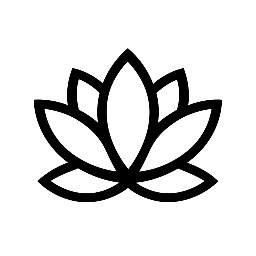Read these teachings with the mind of a curious beginner — without letting your past, or your memories, or your endless layers of social conditioning telling you how you need to interpret them…
Open your mind to possibilities of something far, far larger than the routines of modern industrial culture.
What If It Was True?
What if we could be living in a universe where the things on this page were normal, everyday reality?
1. Integration
The soul’s ultimate goal is to unify all its fragmented parts — conscious, subconscious, and superconscious — into a harmonious whole. This integration transcends the limitations of individual lifetimes and personal identity.
2. Immortality
We believe not only the survival of personality after death, but more fundamentally in the immortality of the deeper self — our spiritual essence that grows ever closer to the Divine source, to the one true ultimate God.
3. Progressive Evolution of Consciousness
The soul evolves through many incarnations and spiritual states, continually expanding its awareness, shedding illusion, and aligning with higher spiritual truths.
4. The Social Life of Our Souls
Many personal and social bonds formed in earthly life continue into the afterlife. Spirits maintain connections with loved ones and communities, though these relationships often take on a more profound, less earthlike form.
In the afterlife, individuals gain greater understanding and empathy. We see beyond earthly misunderstandings and conflicts, leading to deep, harmonious, fulfilling relationships.
Interactions in the spiritual world are not idle or purely social; they serve the soul’s ongoing development. Social life in the afterlife often involves teaching, healing, and collaborative work toward higher goals.
Social life after death transcends physical limitations such as distance and time. Spirits can choose the nature and extent of their social interactions, progressing toward higher states or choosing solitude as needed for further inner work.
The afterlife is a vibrant, dynamic social realm where relationships continue, improve, and deepen — serving the soul’s ultimate journey toward unity and enlightenment.
5. Service and Contribution
Ultimate destiny includes the soul’s role in the greater cosmic plan — to contribute to the evolution of all beings, often by guiding or uplifting others from the higher realms.
6. Freedom and Self-Realization
The soul moves toward a state of complete freedom from earthly limitations—freedom to choose, to create, and to express its true divine nature fully.
7. Ultimate Destiny
Our ultimate destiny is the fully realised integration and evolution of our souls toward spiritual unity and immortality. A journey of consciousness ascending through many stages, not just a single lifetime.
Our ultimate destiny is not simply to survive death, but to awaken fully to our eternal, divine nature and participate consciously in the ongoing creation of the universe.
What This Means
- Souls are active participants in their spiritual journey.
- Death is not the end, but a transition to a state of reflection and planning.
- Rebirths happen for spiritual growth, not punishment or random chance.
- Each incarnation builds on the last, moving the soul toward a higher consciousness.
Imagine, If You Can
An ancient source of information that was not altered or filtered by modern industrial culture, but instead, a nuanced and spiritually rich understanding of your soul’s journey through death, the afterlife, and potential rebirth.
Reincarnation is not a mechanical or cyclic process often described in some Eastern philosophies — but an evolutionary and purposeful return of the soul to the earthly realm.
Yes, reincarnation, as part of a larger, upward arc of spiritual development.
The soul does not reincarnate arbitrarily. It chooses to return to life when specific lessons remain unfinished or when further experiences in the physical world are necessary for growth. These choices are not imposed by any external authority or cosmic punishment but arise from the soul’s own inner recognition of what is needed to reach higher levels of consciousness. Reincarnation thus becomes a voluntary, intelligent, and conscious process aimed at completing spiritual development rather than a blind cycle of rebirth.
Between incarnations, the soul inhabits a subtler, non-physical realm. In this state, it reflects on past experiences, confronts successes and failures, and assimilates moral and spiritual lessons. This intermediate realm is not a place of judgment or stasis but one of deep introspection and preparation. It serves as a spiritual workshop where the soul can heal, learn, and plan the nature of its next earthly experience in cooperation with higher intelligences or inner guidance.
This process is not merely repetitive but progressive — a spiritual spiral where each incarnation builds upon the insights and accomplishments of previous lives. Advancement is not automatic; it depends on the soul’s choices and intentions. Those who live thoughtless or materially driven lives may find themselves spiritually stagnant or reincarnated in circumstances that mirror unresolved inner conflicts. Conversely, those who cultivate compassion, wisdom, and self-awareness can reincarnate in more conducive settings for spiritual advancement — or may even transcend the need to reincarnate altogether.
While the term “karma” may not always be used, there is an understanding that cause and effect are real and meaningful. Souls experience the consequences of their thoughts and actions not as punishment, but as natural extensions of their inner state. This is balanced by a strong emphasis on free will. Souls are not bound by their past; they retain the power to make new choices, redefine their path, and take conscious responsibility for their evolution. In this way, the journey of reincarnation is both deterministic and creative — shaped by past actions but continually redirected by present awareness.
One of the most profound aspects of this view is the belief that each soul creates its own future — not only in life and in the afterlife but in the very form of its existence. The “next life” may not always be on earth; as souls evolve, they may move beyond physical incarnation entirely, entering subtler planes of consciousness and activity. Reincarnation is therefore not an end in itself but a means to a greater end: the eventual realization of divine or cosmic unity, where the soul merges with a higher creative spirit or universal mind.
1. Purposeful Rebirth
“The soul does not wander aimlessly, but chooses its next incarnation to complete the lessons it has not yet mastered. It is an intelligent and conscious process of returning to the earthly realm to perfect itself.”
2. Intermediate State
“Between lives, the soul inhabits a realm where it reviews its past experiences, learns from mistakes, and plans the circumstances of its next birth according to its needs and desires for growth.”
3. Evolution Over Repetition
“Reincarnation is not a mere repetition of lives, but an ascending spiral of consciousness, where each return to earth is on a higher plane of understanding than the last.”
4. Karmic Consequences and Free Will
“The soul meets the consequences of its actions but is not bound by fate; free will allows the soul to choose paths that lead to greater freedom and enlightenment.”
5. Personal Responsibility
“Each individual crafts their afterlife and future incarnations by the thoughts, actions, and intentions they cultivate while on earth.”
Read that last quote once again. Now take a minute to reflect on what you consider to be your direction, your aims, your goals… Your purpose in this life.
Then, return to the ordinary world.


Leave a Reply